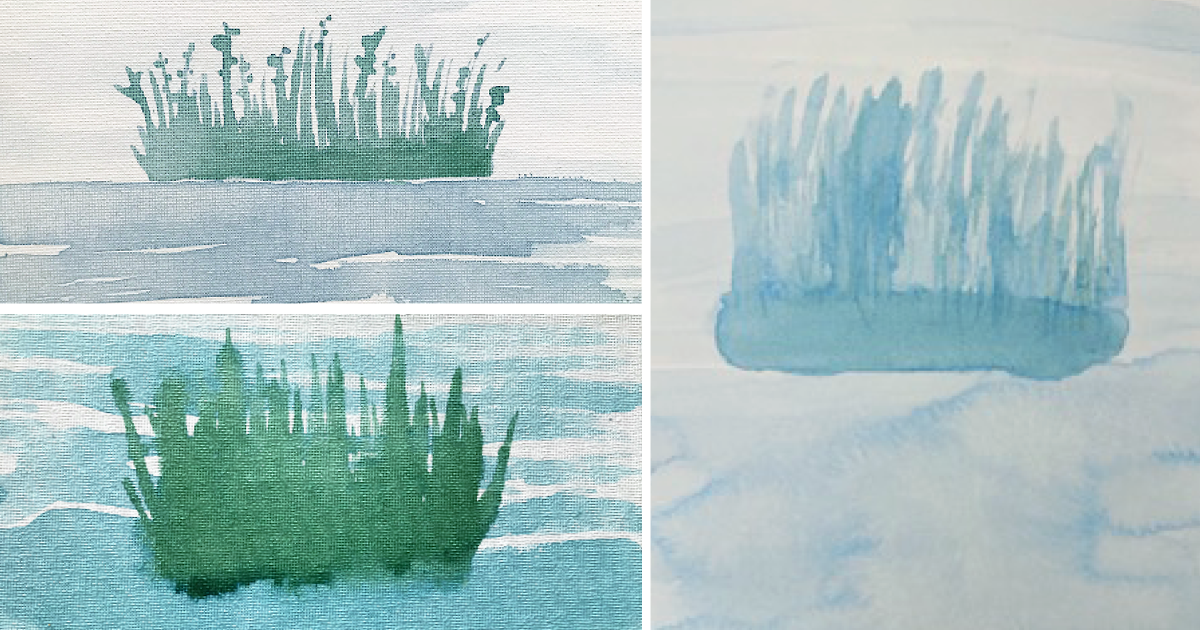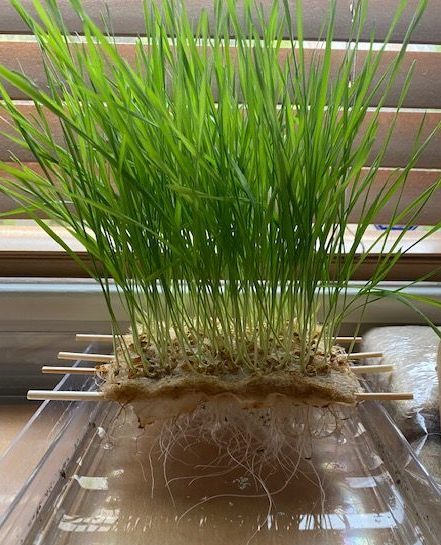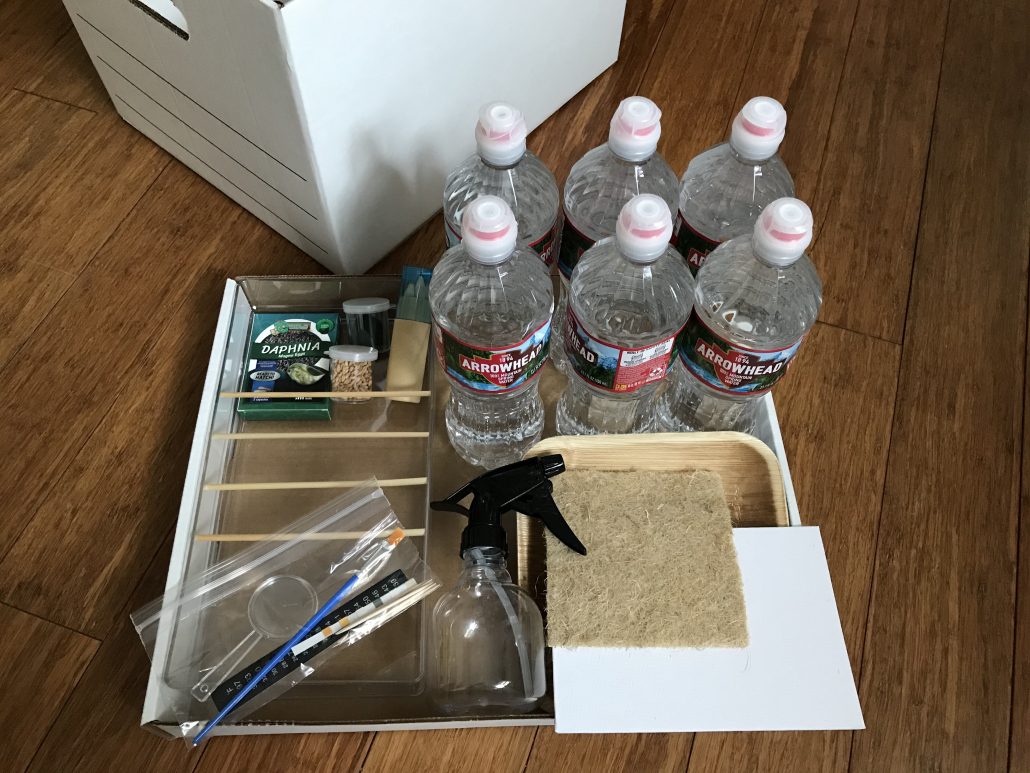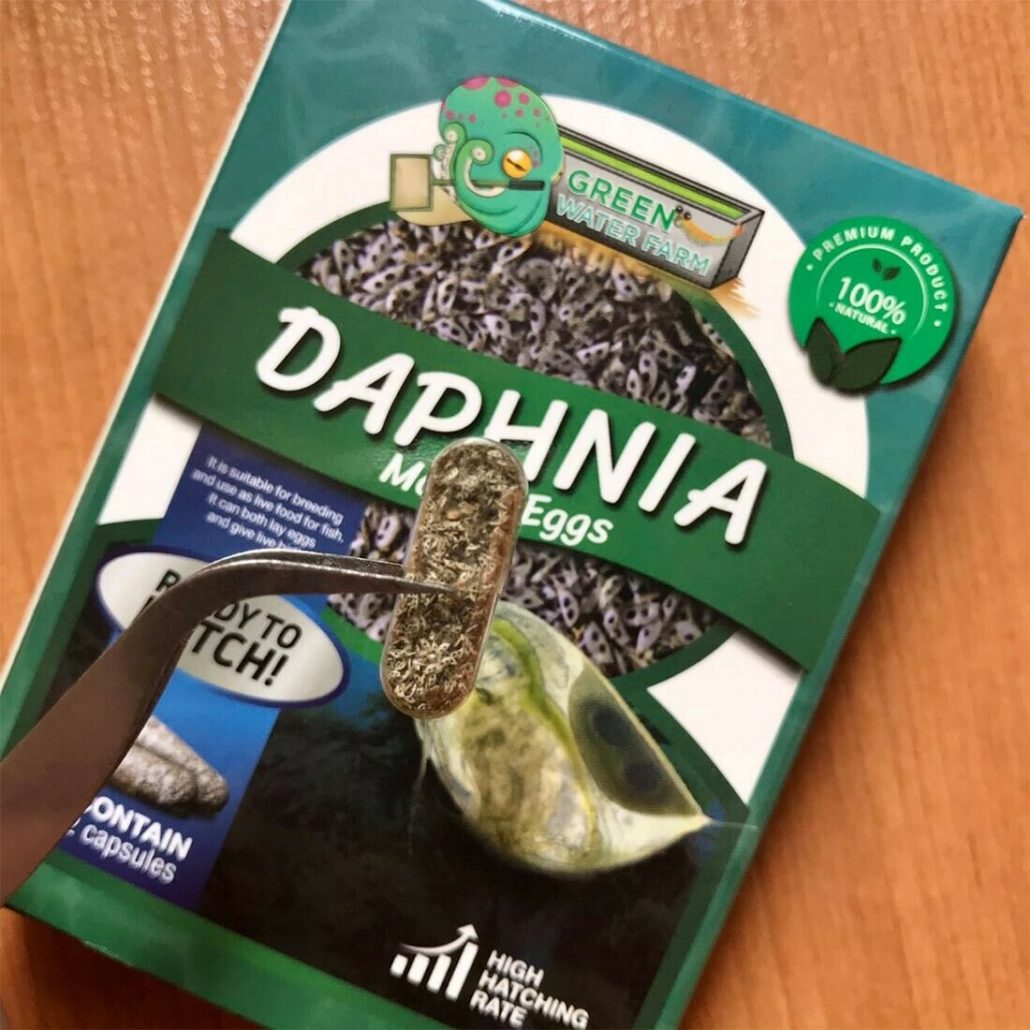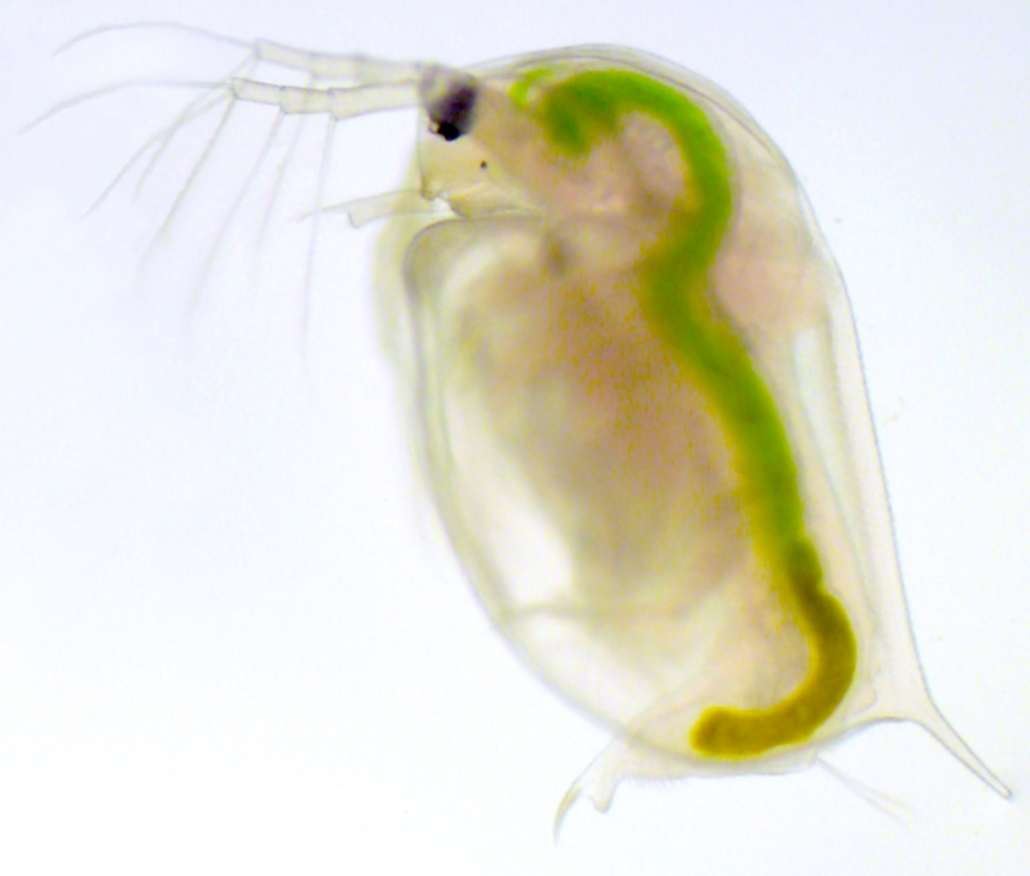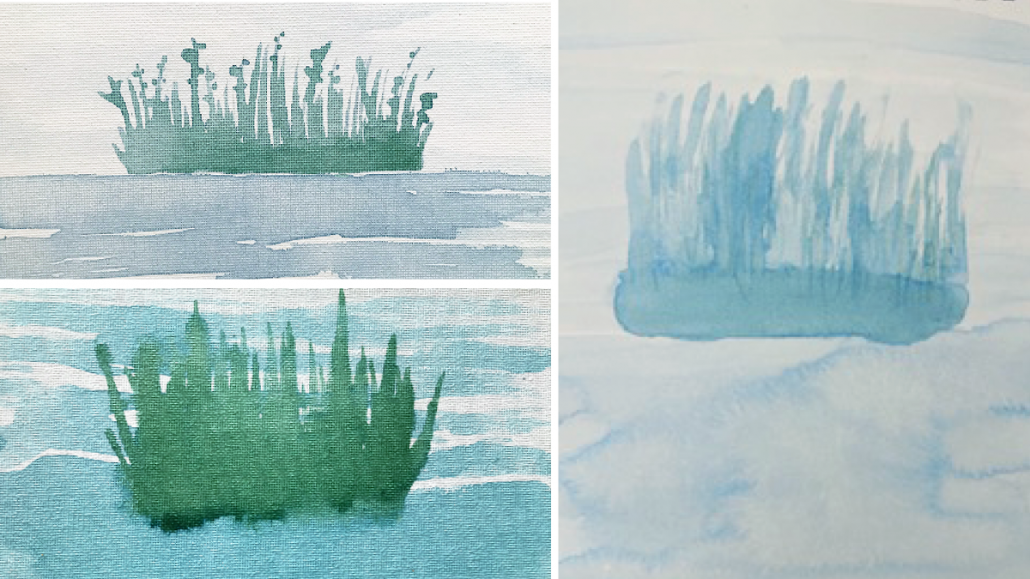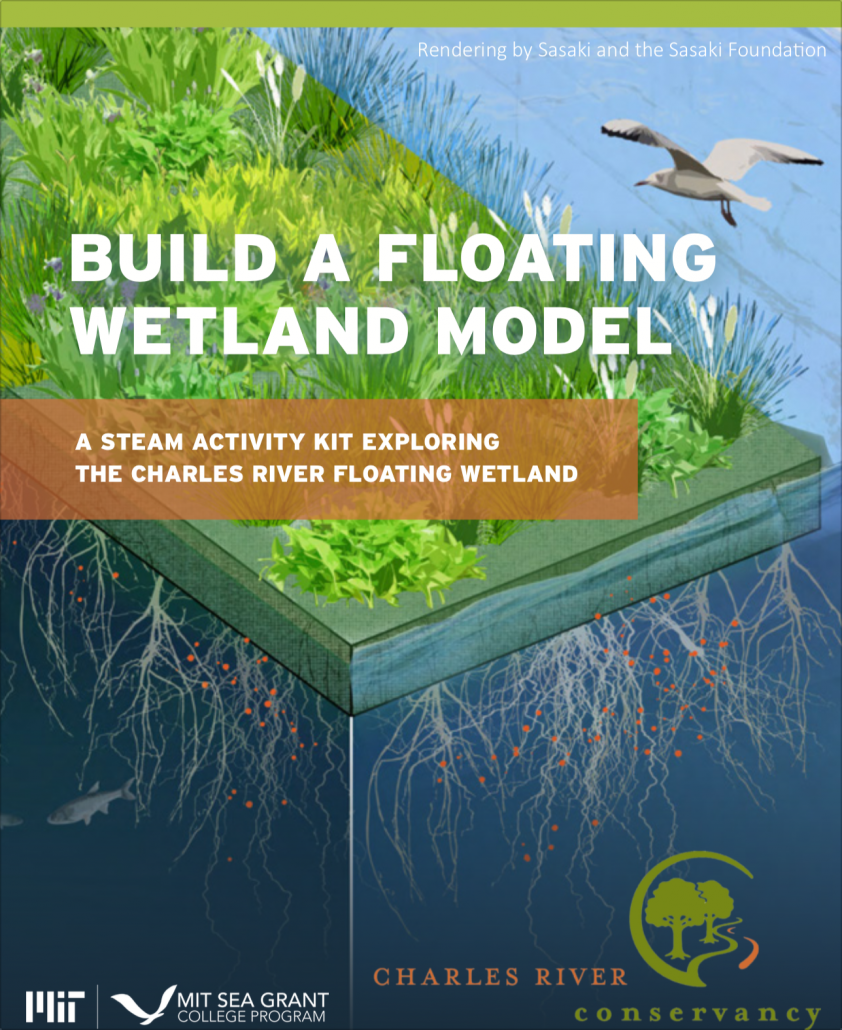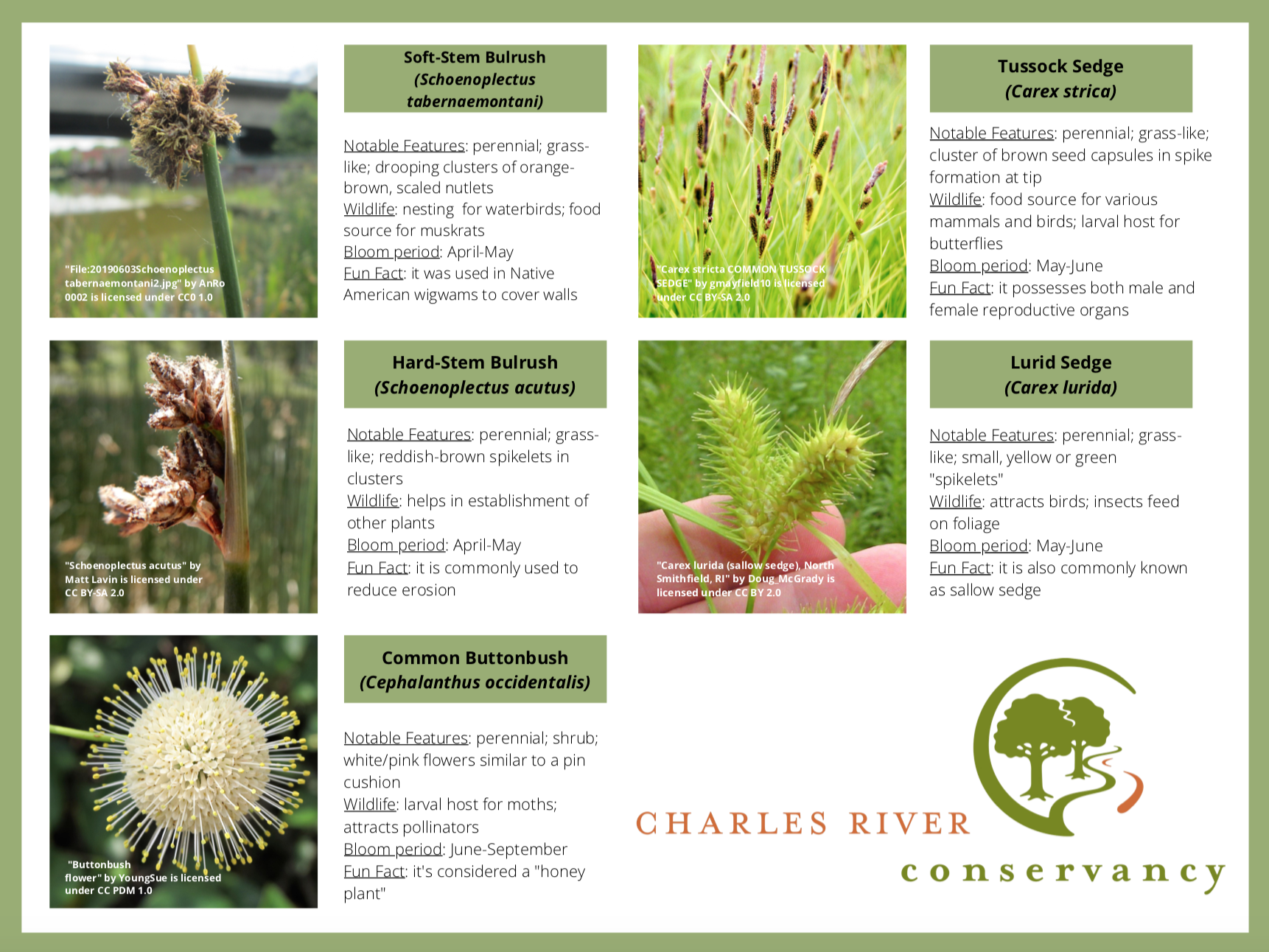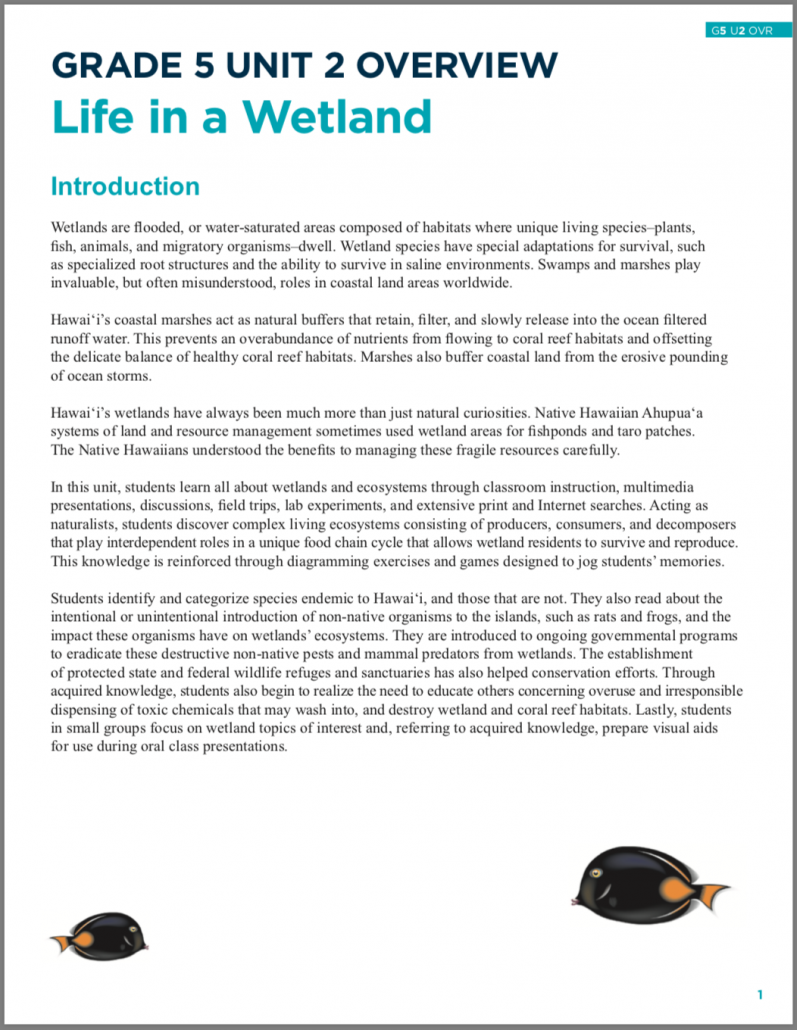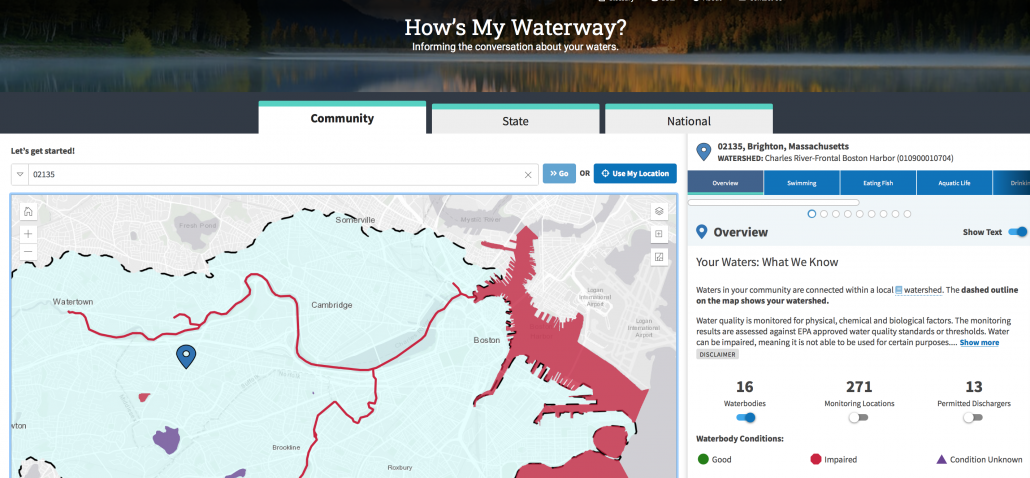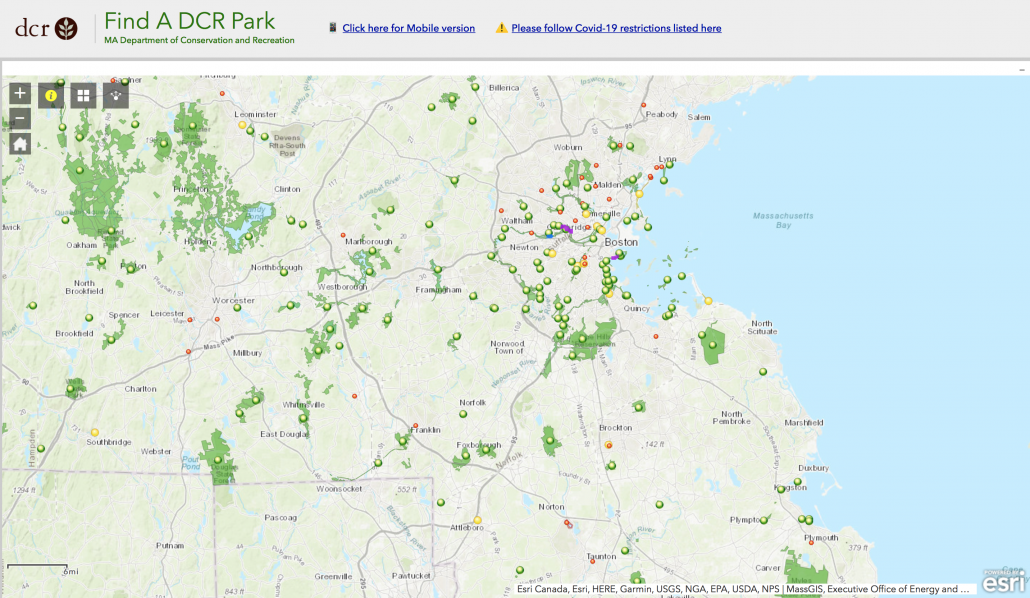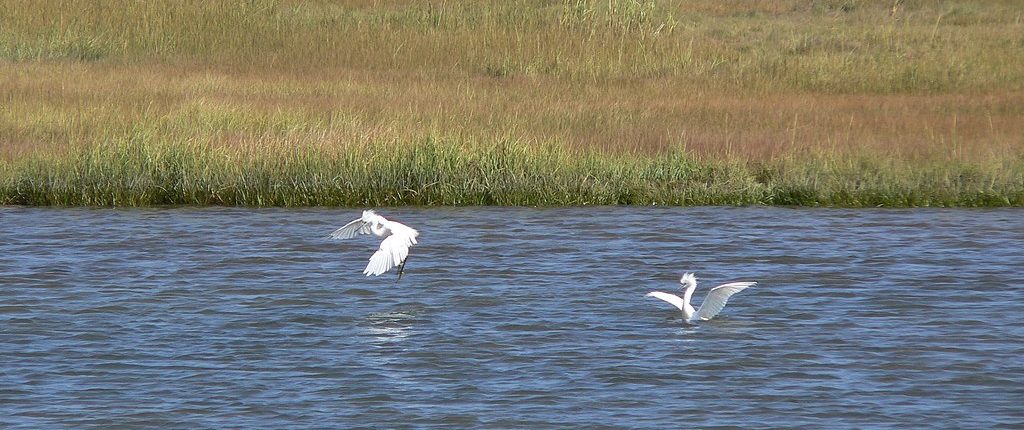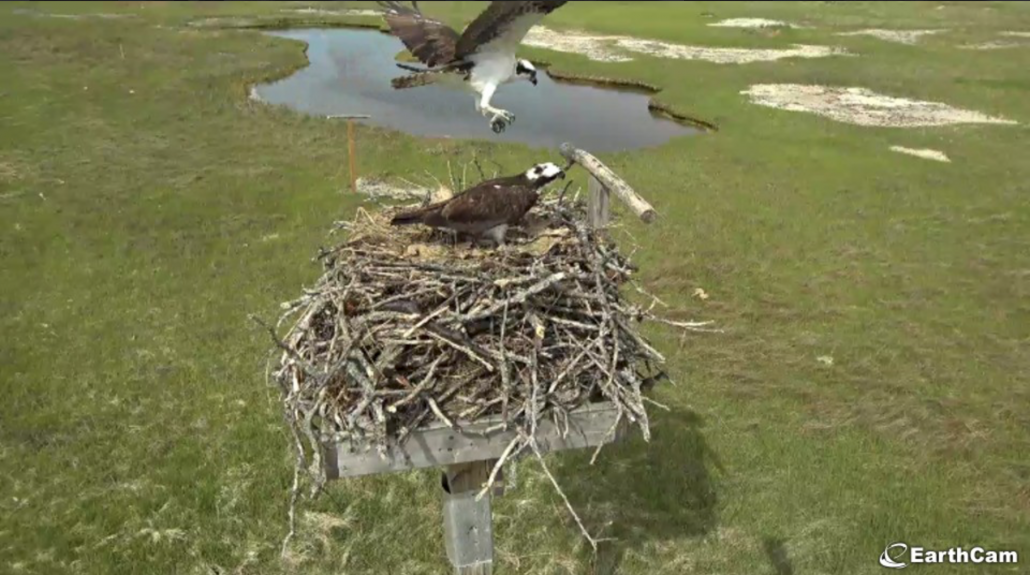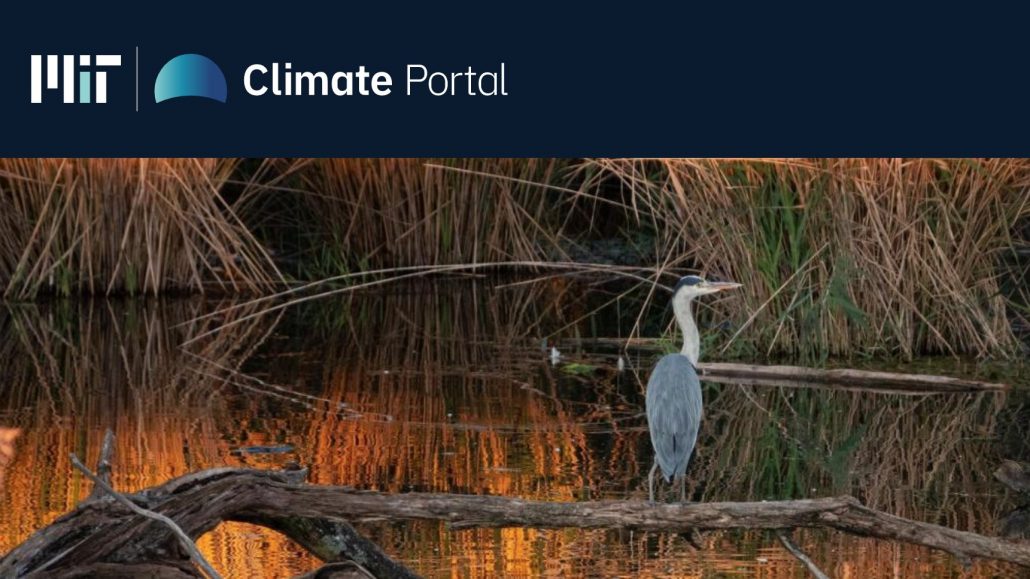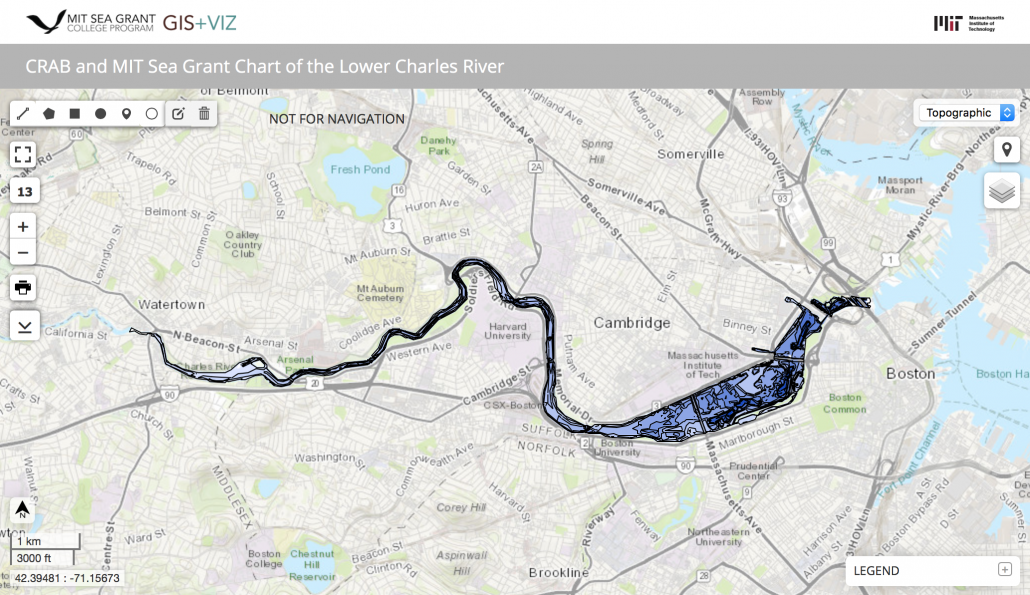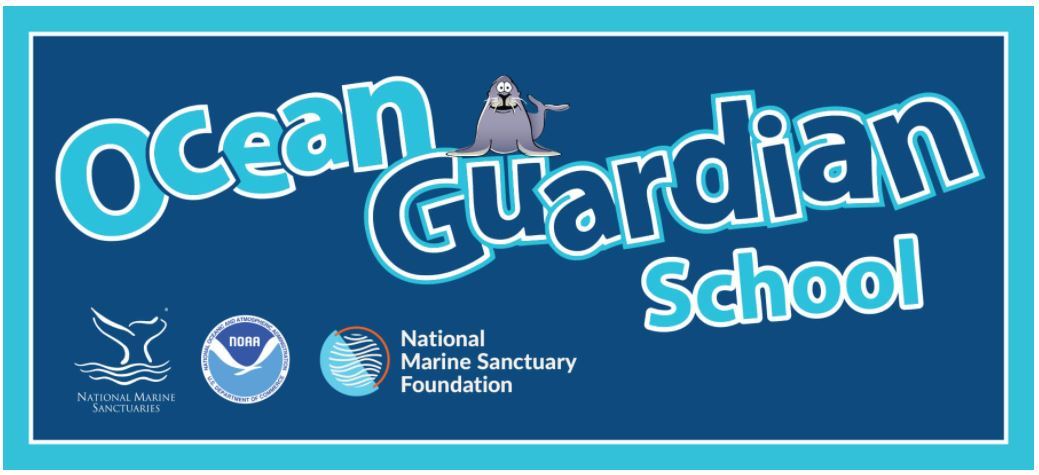Floating Wetland Educational Kit & Resources
Connecting Students with the Charles River Floating Wetland
MIT Sea Grant worked with the Charles River Conservancy to develop an educational science kit and curriculum to teach Cambridge students about the Charles River Floating Wetland and connect them with local ecology during the Covid-19 pandemic.
The Floating Wetland booklets and kits were created by MIT Sea Grant student intern Andrea Lo (MIT Biology ’21) and Lily Keyes (Communications Specialist) during the 2021 spring semester, with funding support from the MIT Community Service Fund. The kits allowed students to build their own living wetland models at home, complete with planktonic daphnia and plants, and a paint-with-algae activity! Paddle Boston also donated canoe and kayak passes for each kit, so students could continue to connect with the river and floating wetland over the summer.
Spring 2021 Floating Wetland Pilot Classes
- STEAM Saturdays, Prospect Hill Academy Charter School (Grades 4-6, May 2021)
Instructors: Andrea Lo (MIT Biology ’21) and Lily Keyes (MIT Sea Grant Communications Specialist) - Morse School, Cambridge Public Schools (Grade 3, May – June 2021)
Instructors: Isabel Eccles (Morse School) with Charles River water quality field trip led by Julie Simpson (MIT Sea Grant Coastal Ecologist)
Spring 2022
- This June, we assembled 180+ kits for about 600 local educators and students to grow their own living floating wetland models in Cambridge Public Schools 6th grade classrooms!
Special Thanks
- Diego Barros (MIT ’25) and Andrea Lo (MIT ’21) (MIT UROP)
- Taylor Leonard, Laura Jasinski, and Vanessa Nason (Charles River Conservancy)
- Zoe Leff and Max Rome (Northeastern/Charles River Conservancy)
- Isabel Eccles (Morse School)
- MIT Community Service Fund
- Paddle Boston
- Rachel Freedline and Hermaine Pierre, Prospect Hill Academy Charter School STEAM Saturdays Program
Model Instructions & Weekly Lessons
Charles River 101
80 miles long | 8,000 acres of wetlands
Despite being the most densely populated watershed in Massachusetts, the Charles River is home to many thriving ecosystems preserved by the government and advocates like the Charles River Conservancy.
The Charles River used to be a free-flowing tidal estuary. A complex habitat of wetlands and mud-flats supported a diversity of species including shellfish, birds, and anadromous fish.
Today, dams maintain a near-constant water level. Hardscape covers much of the river, and nutrient pollution carried by rainwater from the city streets acts as fertilizer fueling the growth of algae.
Current Challenges:
- Lack of vegetation
- Loss of habitat
- Broken food chain
- Nutrient pollution
- Algal blooms
- Water quality
Materials for Model
- Daphnia eggs OR live daphnia culture
- Spring water
- Adhesive aquarium thermometer strip
- Wheat straws OR chopsticks
- Spray bottle
- Plastic tray
- Plate
- Paper towels
- Hemp grow mat
- Wheatgrass seeds
- Baker’s dry yeast
- Spirulina powder
- Magnifying glass (optional)
- Aquarium test strips (optional)
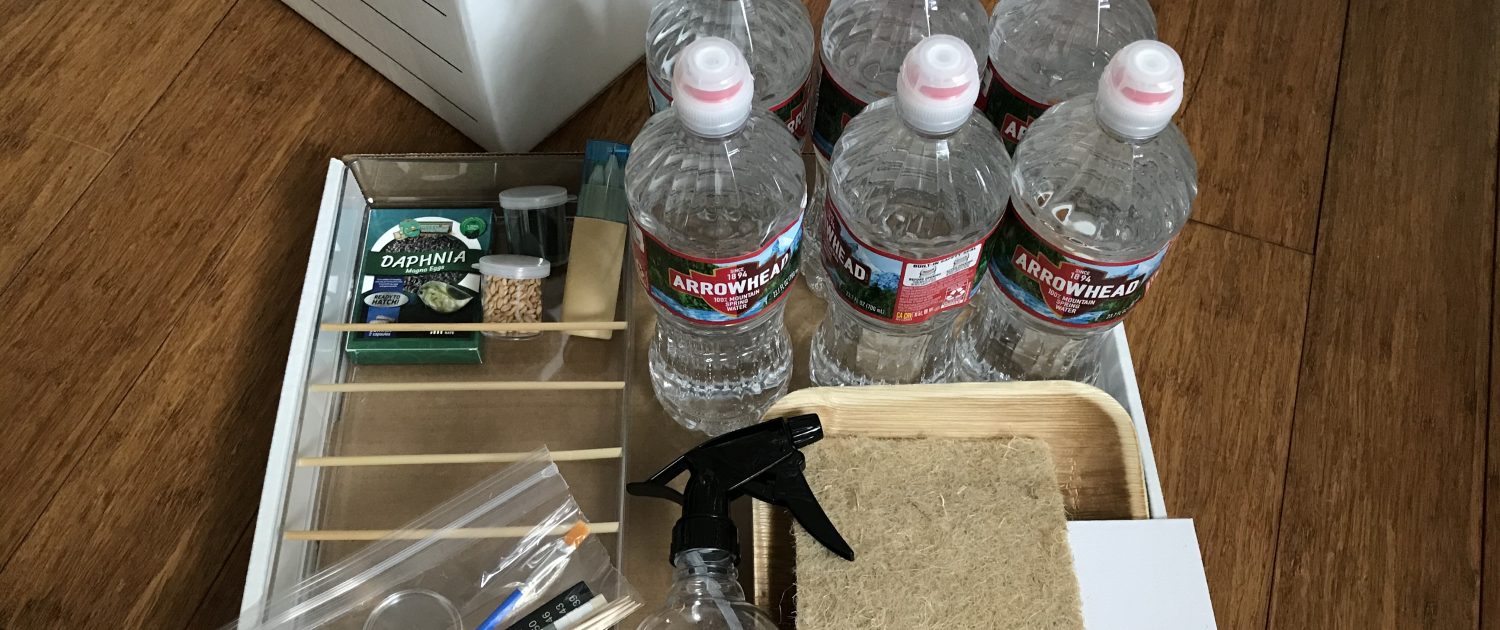
Glossary of Terms
Algae: organisms like seaweed that live in water and make their food by using sunlight to turn carbon dioxide and water into food through photosynthesis
Algal bloom: an overgrowth of algae or cyanobacteria that often results in scum on the surface of water, which can be harmful to other organisms
Anadromous fish: a type of fish, such as river herring, that migrates from saltwater to freshwater to release eggs
Cyanobacteria: microscopic organisms (blue-green algae), which can create algal blooms on the water’s surface
Daphnia: small swimming zooplankton known as water fleas that live in aquatic environments and eat mostly algae
Ecological intervention: habitat restoration and other environmental solutions to help improve ecosystem health
Ecology: a branch of science focusing on the relationships between living things and their environment
Ecosystem: a community of living organisms interacting with one another and their environment
Estuary: the mouth of a river where fresh and saltwater mix, home to unique plant and animal communities and wetlands
Floating Wetland: a human-made island of plants; the Charles River Floating Wetland aims to restore zooplankton habitat and help improve river health
Hardscape: man-made features in landscape architecture like paths or the concrete walls lining the Charles River
Mud-flats: an area of land that lies just below the surface of water or repeatedly covered by the tide
Nutrient pollution: too many nutrients running from urban areas into a body of water, causing an overgrowth of algae
Organism: a living thing – a person, plant, or animal
Spawn: the process of aquatic animals releasing eggs in water; river herring migrate to the Charles River to spawn
Spirulina: a type of blue-green algae (cyanobacteria)
Watershed: an area that drains streams and rainfall to a common body of water
Wetlands: areas and ecosystems flooded by water, such as marshes or swamps, supporting aquatic and land species
Zooplankton: tiny creatures living in oceans, seas, and bodies of fresh water, which are an important part of the food chain
Week 1
Week 1
In this lesson, students are introduced to the Charles River and its history, with an emphasis on events that have led up to challenges that the river ecosystem currently faces. Students are also briefly introduced to the Charles River Floating Wetland Project as a concept for ecological intervention to curb the aforementioned challenges. In the activity, students set up the spring water-filled trays and release their daphnia eggs to observe for hatching. Additionally, students will prepare food for their daphnia to feed after hatching is observed.
Resources:
- mywaterway.epa.gov (Interactive watershed maps by the US Environmental Protection Agency)
- An Introduction to the Charles River Floating Wetland (Video by the Charles River Conservancy)
Step-by-Step:
- Releasing daphnia
- Find a spot on a flat, stable surface by a window to set up your mini ecosystem. You can waterproof your area by putting wax paper or newspaper down first.
- Fix the adhesive thermometer to the inside of the tray along the side towards the bottom of the tray.
- Fill the tray almost to the top with bottled spring water, leaving about half an inch between the surface of the water and the top of the tray.
- Check the water temperature. Daphnia hatch best in water that is at least 65°F, with several hours of morning or afternoon sun.
- Carefully pour the daphnia eggs into the water in the tray. It’s normal for eggs to float.
- Preparing daphnia nutrients
- Mix 1 pinch of spirulina powder (blue-green algae) with 1 pinch of baker’s yeast in a small container with a lid, or a water bottle.
- Add 1 oz of spring water to the nutrient mixture, close the container and shake.
- Refrigerate the mixture.
Instructions for the Week:
Daphnia can take several days to hatch (around 4 days). Every day, look closely to see if you can spot any movement. They will look like swimming fleas. Once they have hatched, use a straw to add one drop of the prepared nutrients every day.
Core Questions:
- What challenges does the Charles River face today?
- What is the Floating Wetland Project? What are its goals?
Week 2
Week 2
In this lesson, students learn about the construction of the Charles River Floating Wetland. Students also are taught basic concepts of wetland ecosystems, including features and functions, including water filtration. In the activity, students begin growing seeds on a grow mat to serve as a miniature homemade floating wetland.
Resources:
- Making of the Charles River Floating Wetland – timestamped at assembly section (Charles River Conservancy video)
Step-by-Step:
- Soak the seeds
- Fill the container of wheatgrass seeds with water and put the lid on. You can rinse them for best results.
- Let the seeds soak in the water for about 8 hours. This will soften their seed coat and help them to sprout! Create a reminder for yourself to place the seeds on the grow mat later!
- Mat the seeds
- After 8 hours of soaking the seeds, place the grow mat on the bamboo plate and dump the seeds and water onto the mat. Use your fingers to spread the seeds out evenly.
- Fold and dampen a paper towel and use it to cover the mat and seeds. Keep the paper towel wet by spraying with water every day, until you see sprouts.
Instructions for the week:
Every day, spray your wheatgrass and grow mat. After 2-3 days, once you see sprouts, uncover your wheatgrass and grow mat and keep spraying with water every day.
If you have daphnia, keep feeding them one drop of nutrients every day! If you haven’t seen any swimming, don’t add nutrients yet. It can take up to 10 days for daphnia to hatch, and sometimes they don’t hatch at all.
Core Questions:
- What is a wetland? What are its functions?
- What are some food chains within an ecosystem like the Charles River?
Week 3
Week 3
Students first share their progress with their daphnia hatching and plant growth. Afterwards, students learn about the anatomy and function of daphnia, the model organism for zooplankton. The concept of zooplankton is connected to the wider topic of the food chain. In the activity, students finally put the daphnia tray together with the miniature floating wetland, creating a floating wetland ecosystem while paying attention to any root growth that can serve as refuge for the daphnia.
Resources:
- Water Fleas: Look Weird, Adapt Weirder (Journey to the Microcosmos video)
- Making of the Charles River Floating Wetland – timestamped at research section (Charles River Conservancy video)
Step-by-Step:
- Build the model
- Position four straws across the top of the tray about an inch apart and parallel to each other.
- Using both hands, pick up the grow mat from the plate and carefully lay it on top of the straws. Any roots that have begun to grow should hang down towards the water, and eventually grow into it as a water source.
- Add plants and animals
- Color the species in the Booklet (pg 11) or draw your own animals and plants! Cut them out and add them to your wetland. We used toothpicks to poke two holes in each cut-out and stood them up in our mats.
- We colored in the blue flag iris, a beaver, great blue heron, and a painted turtle! You could even add a Lego or other small toy to your wetland model.
- Prepare the paint
- Mix spirulina powder (blue-green algae) with water in a small container with a lid.
- Refrigerate the natural paint for the week – try not to move or shake the container and let the algae turn blue due to a pigment-protein called phycocyanin.
Instructions for the week:
Every day, continue to feed your daphnia one drop of food, and spray your wetland.
Core Questions:
- What are daphnia?
- What are some methods that daphnia employ for survival?
- Can the Charles River Floating Wetland increase the size and number of zooplankton and reduce algae in the river?
Week 4
Week 4
In this lesson, students learn about cyanobacteria in more detail. The discussion of cyanobacteria includes topics such as photosynthesis, adaptation, and evolution, and emphasizes their proliferation, leading to algal blooms. Factors attributed to cyanobacterial growth and population crashes of daphnia and other zooplankton are identified. Harmful algal blooms are specifically targeted, and students learn to identify harmful algal blooms, namely through a visual comparison to green algae and duckweed, and their distinct effects on the wetland ecosystem. Students also paint a wetland with spirulina powder.
Resources:
- All About Cyanobacteria (Charles River Conservancy video)
- Why Cyanobacteria Thrive in the Charles (Charles River Conservancy video)
Step-by-Step:
- Art with algae
- Remove your paint container from last week from the refrigerator – careful not to shake it!
- Paint a floating wetland on your watercolor art board using blue first, and then shaking the container for a green color. Start with the sky and the water. Then put the lid on, shake, and paint the wetland and plants. Get creative!
Instructions for clean-up:
Clean your paintbrush and reuse! The bamboo paper towels, plate, and wheat straws are biodegradable. Please recycle any water bottles.
By the end of the month, your daphnia will likely have completed their natural life cycle. You can continue to feed any remaining living daphnia this week. You can use the contents of the tray to water an indoor plant – these are healthy nutrients for your plants! OR…Ask an adult to help add a small amount of bleach to the tray and pour down the drain with water. (These species are present in Massachusetts, but this is a good practice to prevent invasive species).
Core Questions:
- What are cyanobacteria?
- What behaviors do cyanobacteria exhibit?
- What are algal blooms, and how do they prosper?
- How has urban development affected the Charles River ecosystem?
- What factors cause population crashes to occur?
- How does a decrease in zooplankton populations affect cyanobacteria populations?
- What are harmful algal blooms? What do they look like, and how can they be distinguished?
Floating Wetland Activity Booklet
The Charles River Conservancy Floating Wetland
The Charles River Floating Wetland was installed by the Charles River Conservancy in partnership with the Massachusetts Department of Conservation and Recreation and a number of supporters, including Foth and the Sasaki Foundation. The CRC continues a multi-year partnership with Northeastern University PhD student Max Rome on a research program to monitor the wetland’s ecological and water quality impacts.
The Charles River Floating Wetland reintroduces native plants to increase habitat diversity and support the tiny animals, zooplankton, that graze on fast-growing algae. Algal blooms in the Charles River can be understood as a symptom of a broken food chain. The Floating Wetland is an ecological intervention that aims to restore balance.
Project Goals in the Charles River
- Enliven the river with a visually impactful wetland installation
- Research the impact of improved habitat on zooplankton species distribution and size
- Engage and educate the public about the relationship between Charles River ecology, pollution, and water quality
Visit | The Charles River Floating Wetland
The Floating Wetland is located in the Charles River along Cambridge Parkway, just downriver of the Longfellow Bridge near the Broad Canal. Take a walk to see the wetland, or rent a canoe or kayak to get a closer look!
Additional Resources – Guides, Maps, Videos & More
Plant Guides | Charles River Conservancy
Get to know the 19 native plants of the Charles River Floating Wetland with this infographic guide or view the planting plan.
Research | Northeastern University
Curious about the science behind the Charles River Floating Wetland? The Charles River Conservancy works with a research team from Northeastern University, led by PhD student Max Rome. Dive into the details on the research website. Photos: Rebecca Kopycinski
Videos | Charles River Conservancy
Learn about the ecological concepts behind the floating wetland and the hypothesis that the research team is studying through a series of 2-minute videos (Grades 3+).
Lesson | NOAA: Life in a Wetland
In this unit (Grade 5), students learn about wetlands through multimedia presentations, experiments, and more. Acting as naturalists, students discover complex living ecosystems that play interdependent roles in a unique food chain cycle.
Guide | EPA: Teaching About Wetlands
Why is a wetland important? This guide provides context and resources for teaching about the value of wetlands with tools for students to become active citizens working to protect a critical feature of the environment.
Explore | Tidmarsh Living Observatory
Take a virtual visit to agricultural fields (formerly natural wetlands) undergoing restoration in Southeastern Massachusetts. View sensor data, watch camera feeds, and listen to live audio from the Tidmarsh Living Observatory. The MIT Media Lab’s Responsive Environments Group developed a sensor network that documents ecological processes and allows people to experience data at different spatial and temporal scales.
Maps | EPA: How’s My Waterway?
How’s My Waterway was designed to provide the general public with information about the condition of their local waters based on data that states, federal, tribal, local agencies and others have provided to the EPA.
Visit | Local Watersheds & Wetlands
- Rumney Marsh Reservation (Saugus)
- Upper Charles River Reservation (Waltham)
- Mass Audobon Boston Nature Center and Wildlife Sanctuary family activities
Live Cam | Osprey Nest at a Wetland
Watch a busy wetland nest at the Belle Isle Marsh Reservation in Boston, MA. Ospreys are also known as fish hawks, with a diet of 99% fish. Besides bald eagles, they are the only hawks you will see diving into the water for a meal.
Video | Chicago River Floating Gardens
Watch a video about the Floating Gardens and students who contributed to green innovations for the Chicago River. Explore the Urban Rivers page to learn more about the Wild Mile.
MIT Climate Portal | Coastal Ecosystems
Explore carbon storage and powerful habitats in this Coastal Ecosystems & Climate Change Explainer by MIT Sea Grant Coastal Ecologist Julie Simpson, MIT CEE Professor Heidi Nepf, and MIT ESI / Science Writing student Elizabeth Gribkoff.
Maps | MIT Sea Grant Bathymetric Chart
Through a partnership with Charles River Alliance of Boaters, a bathymetric chart of the river depth between the Charles River Dam and the Watertown Dam was developed, with aims to monitor changes in the river bottom.
NOAA | Promote PreK-12 Watershed Education
Promote watershed education and ocean stewardship in your school or local community through a school- or community-based project. The Ocean Guardian School Program is managed by NOAA’s Office of National Marine Sanctuaries with funding coordinated by the National Marine Sanctuary Foundation.
Art | Blue-Green Algae as Watercolor
Mix spirulina powder (blue-green algae) and water to create a natural paint for a wetland watercolor! Refrigerate the mixture in a covered container for a few days. The algae will turn blue due to a pigment-protein called phycocyanin. After painting the sky and water, shake the mixture for a green color.
